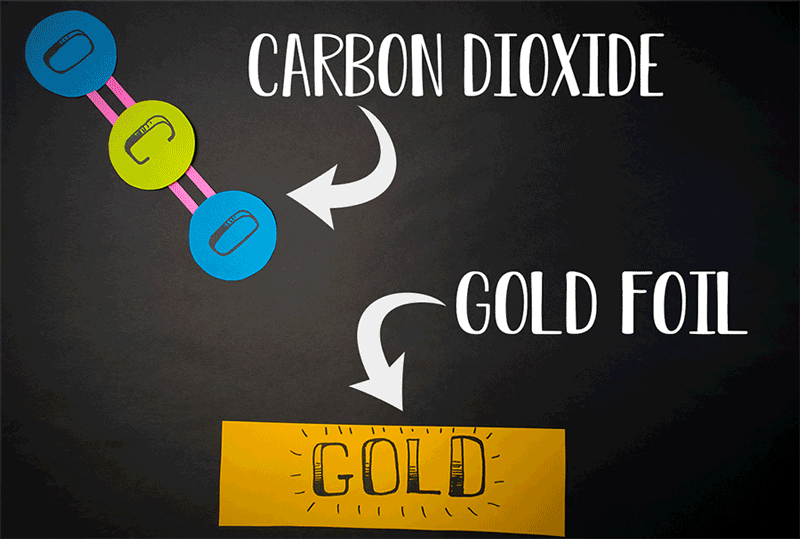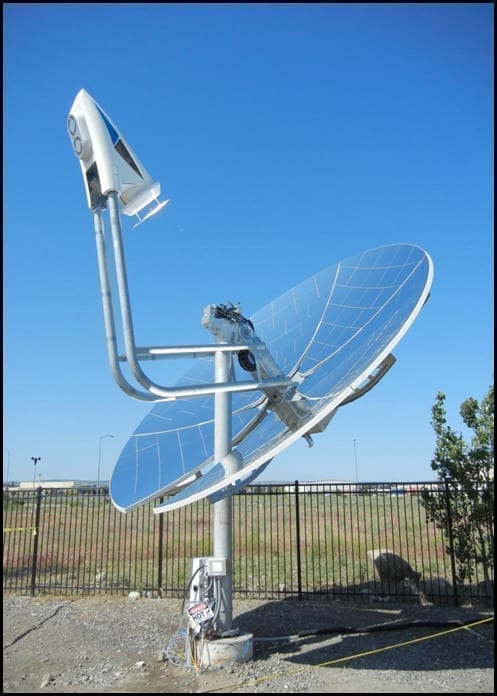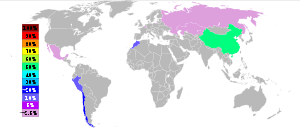
Human travel to Mars has long been the unachievable dangling carrot for space programs.
Now, astronauts could be a step closer to our nearest planetary neighbor through a unique manipulation of nuclear fusion, the same energy that powers the sun and stars.
University of Washington researchers and scientists at a Redmond-based space-propulsion company are building components of a fusion-powered rocket aimed to clear many of the hurdles that block deep space travel, including long times in transit, exorbitant costs and health risks.
“Using existing rocket fuels, it’s nearly impossible for humans to explore much beyond Earth,” said lead researcher John Slough, a UW research associate professor of aeronautics and astronautics. “We are hoping to give us a much more powerful source of energy in space that could eventually lead to making interplanetary travel commonplace.”
The project is funded through NASA’s Innovative Advanced Concepts Program. Last month at a symposium, Slough and his team from MSNW, of which he is president, presented their mission analysis for a trip to Mars, along with detailed computer modeling and initial experimental results. Theirs was one of a handful of projects awarded a second round of funding last fall after already receiving phase-one money in a field of 15 projects chosen from more than 700 proposals.
NASA estimates a round-trip human expedition to Mars would take more than four years using current technology. The sheer amount of chemical rocket fuel needed in space would be extremely expensive – the launch costs alone would be more than $12 billion.
Slough and his team have published papers calculating the potential for 30- and 90-day expeditions to Mars using a rocket powered by fusion, which would make the trip more practical and less costly.
But is this really feasible?
Slough and his colleagues at MSNW think so. They have demonstrated successful lab tests of all portions of the process. Now, the key will be combining each isolated test into a final experiment that produces fusion using this technology, Slough said.
The research team has developed a type of plasma that is encased in its own magnetic field. Nuclear fusion occurs when this plasma is compressed to high pressure with a magnetic field. The team has successfully tested this technique in the lab.
Only a small amount of fusion is needed to power a rocket – a small grain of sand of this material has the same energy content as 1 gallon of rocket fuel.
To power a rocket, the team has devised a system in which a powerful magnetic field causes large metal rings to implode around this plasma, compressing it to a fusion state. The converging rings merge to form a shell that ignites the fusion, but only for a few microseconds. Even though the compression time is very short, enough energy is released from the fusion reactions to quickly heat and ionize the shell. This super-heated, ionized metal is ejected out of the rocket nozzle at a high velocity. This process is repeated every minute or so, propelling the spacecraft.
The team had a sample of the collapsed, fist-sized aluminum ring resulting from one of those tests on hand for people to see and touch at the recent NASA symposium.
“I think everybody was pleased to see confirmation of the principal mechanism that we’re using to compress the plasma,” Slough said. “We hope we can interest the world with the fact that fusion isn’t always 40 years away and doesn’t always cost $2 billion.”
Now, the team is working to bring it all together by using the technology to compress the plasma and create nuclear fusion. Slough hopes to have everything ready for a first test at the end of the summer.
The Latest Bing News on:
Fusion-powered rocket
- Astronomers close in on the mystery of the erupting Orion star system (video)on May 1, 2024 at 8:00 am
"FU Ori has been devouring material for almost 100 years to keep its eruption going. We have finally found an answer to how these young, outbursting stars replenish their mass." ...
- Minecraft Meets Rocket League: Player Constructs Spectacular Football Arena in Virtual Collaboration!on May 1, 2024 at 3:12 am
Player replicates Rocket League soccer arena, showcasing the game's limitless creative potential. A testament to Minecraft's boundless freedom and imaginative possibilities.
- Best builds to win Pantheon in Destiny 2: Warlock, Titan, and Hunteron April 30, 2024 at 9:52 am
Subclass verbs Restoration, Cure, Woven Mail, Devour, Invisibility, Void Overshield, Weaken. With these subclass verbs in mind, you can see that the best subclasses for endgame content, including ...
- Debris dilemma: Japan’s mission makes progress in orbital clean-up effortson April 28, 2024 at 7:53 am
The ADRAS-J spacecraft, acting like a garbage truck in orbit, just finished getting close to a rocket that's been floating around since 2009.
- RocketStar Inc's Breakthrough in Space Travel: The Nuclear Fusion Driveon April 27, 2024 at 11:46 pm
In the realm of space exploration and satellite deployment, propulsion technology is the linchpin to achieving ever-greater milestones. Imagine a spacecraft that harnesses the power of nuclear fusion, ...
- China’s Military-Civil Fusion Space Programon April 26, 2024 at 7:57 pm
China is actively pursuing space superiority while acquiring and developing counter-space capabilities and technologies.
- How to prepare for Destiny 2: The Final Shapeon April 26, 2024 at 4:32 am
Note: While the release date for The Final Shape is June 4, Bungie will shut the servers down 24 hours early, on June 3, in order to prepare the game for the expansion. Do not plan to cram last minute ...
- All sunset weapons - Destiny 2on April 25, 2024 at 11:50 pm
Though there are a lot of weapons in Destiny 2, many have been sunset over the years. As we head toward the release of The Final Shape, Bungie revealed that the weapons that are sunset would be ...
- Fallout 4 best Power Armor ranked and all locationson April 24, 2024 at 2:06 am
Here is a list of the best Fallout Power Armor sets ranked from worst to best and all Power Armor locations in the game.
- RocketStar's Fusion-Fueled Breakthrough Could Revolutionize Space Travel Efficiencyon April 15, 2024 at 7:12 am
According to the company, the drive has been tested in space as part of NASA’s Artemis mission. “Our FireStar Foundation Drive was developed and launched for Artemis 1 in November 2022,” they told The ...
The Latest Google Headlines on:
Fusion-powered rocket
[google_news title=”” keyword=”fusion-powered rocket” num_posts=”10″ blurb_length=”0″ show_thumb=”left”] [/vc_column_text]The Latest Bing News on:
Interplanetary travel
- ‘Mars Express' Review: Jérémie Périn's Animated Cyberpunk Noir Updates ‘Ghost in the Shell' for the Commercial A.I. Ageon May 1, 2024 at 9:00 am
This ultra-cool and dazzlingly animated French import balances the boundlessness of technology against the banality of what we use it for.
- SpaceX unveils cosmic tourism: Here's how to book your ticket to spaceon May 1, 2024 at 3:18 am
The Elon Musk-led company has started selling tickets for low-earth orbit trips and beyond as soon as the end of this year, hoping to use its Dragon and the Starship for the journeys ...
- March and April Highlights from NASA Ames Astrogram 2024on April 30, 2024 at 4:48 pm
The Advanced Composite Solar Sail System CubeSat mission, with a payload from NASA Ames, saw a successful launch on April 23 aboard an Electron rocket by Rocket Lab from Māhia, New Zealand. This ...
- Gayatri Sarkar, CEO Of Advaita Capital Will Ignite Diversity And Ethical Investing In Venture Capitalon April 30, 2024 at 3:00 pm
Gayatri Sarkar, CEO of Advaita Capital, the only woman and person-of colour-owned VC firm knows Venture Capital will have its reckoning but is undeterred as she influences deep tech innovation towards ...
- Elon Musk Sets Date for Mars Colonization! All the Exciting Details Insideon April 28, 2024 at 9:33 am
Elon Musk, the visionary entrepreneur behind SpaceX and Tesla, has long captivated the world with his audacious goal of colonizing Mars. Now, he's setting a ...
- Elon Musk in 2024: What You Should Know About Him!on April 25, 2024 at 1:52 pm
Elon Musk‘s meteoric rise to fame stems from his founding of some of the world’s most cutting-edge tech enterprises, notably Tesla, an electric vehicle pioneer, and SpaceX, a trailblazer in space ...
- An unexpected Pacific paradiseon April 24, 2024 at 2:23 pm
Visiting Micronesia’s islands and atolls offers an unexpected rare glimpse into remote communities steeped in centuries-old cultural traditions.
- MIT Technology Reviewon April 24, 2024 at 1:59 am
Whatever we build today will create our future. And if we're not thoughtful about it, the forward steps we take now could be seen as steps back in the years to come.
- Fortnite launches to the moon in new 'Lunar Horizons' simulation gameon April 23, 2024 at 12:00 pm
With NASA's return to the moon with Artemis 3 tentatively scheduled to touch down at the lunar south pole sometime in 2026, gamers can get into character as astronauts embarking on an expedition to ...
- From Orbit to Object: Transforming Space Probe Paths into 3D Printson April 23, 2024 at 9:03 am
A new research paper proposes a method to use interplanetary space probe trajectories as a method to generate unique 3D printable designs.
The Latest Google Headlines on:
Interplanetary travel
[google_news title=”” keyword=”interplanetary travel” num_posts=”10″ blurb_length=”0″ show_thumb=”left”]










